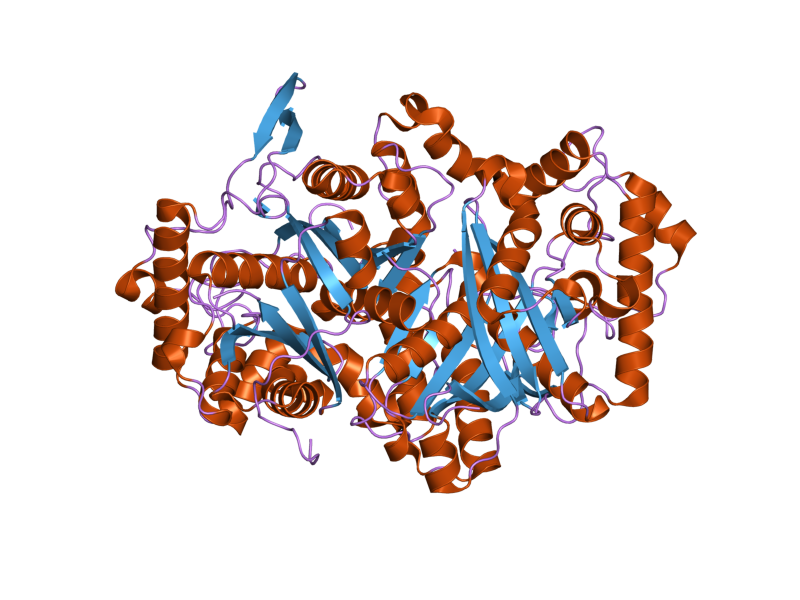|
Glycerone-phosphate O-acyltransferase
Glyceronephosphate O-acyltransferase is an enzyme associated with Rhizomelic chondrodysplasia punctata Rhizomelic chondrodysplasia punctata is a rare developmental brain disorder characterized by systemic shortening of the proximal bones (i.e. rhizomelia), seizures, recurrent respiratory tract infections and congenital cataracts. The affected in ... type 2. GNPAT is located on chromosome 1 on the plus strand. The gene C1orf131 is located directly upstream of it, and the closest downstream gene is EXOC8. References External links * EC 2.3.1 {{2.3-enzyme-stub ... [...More Info...] [...Related Items...] OR: [Wikipedia] [Google] [Baidu] |
Enzyme
Enzymes () are proteins that act as biological catalysts by accelerating chemical reactions. The molecules upon which enzymes may act are called substrates, and the enzyme converts the substrates into different molecules known as products. Almost all metabolic processes in the cell need enzyme catalysis in order to occur at rates fast enough to sustain life. Metabolic pathways depend upon enzymes to catalyze individual steps. The study of enzymes is called ''enzymology'' and the field of pseudoenzyme analysis recognizes that during evolution, some enzymes have lost the ability to carry out biological catalysis, which is often reflected in their amino acid sequences and unusual 'pseudocatalytic' properties. Enzymes are known to catalyze more than 5,000 biochemical reaction types. Other biocatalysts are catalytic RNA molecules, called ribozymes. Enzymes' specificity comes from their unique three-dimensional structures. Like all catalysts, enzymes increase the reaction ra ... [...More Info...] [...Related Items...] OR: [Wikipedia] [Google] [Baidu] |
Rhizomelic Chondrodysplasia Punctata
Rhizomelic chondrodysplasia punctata is a rare developmental brain disorder characterized by systemic shortening of the proximal bones (i.e. rhizomelia), seizures, recurrent respiratory tract infections and congenital cataracts. The affected individuals have low levels of plasmalogens. Signs and symptoms Rhizomelic chondrodysplasia punctata has the following symptoms: * Bilateral shortening of the femur * Post-natal growth problems (deficiency) * Cataracts * Intellectual disability * Possible seizures * Possible infections of respiratory tract Genetics This condition is a consequence of mutations in the PEX7 gene, the GNPAT gene (which is located on chromosome 1) or the AGPS gene. The condition is acquired in an autosomal recessive manner. Pathophysiology The mechanism of rhizomelic chondrodysplasia punctata in the case of ''type 1'' of this condition one finds that peroxisome objective is PEX7, in peroxisome assembly. There are 3 pathways that ''count on'' PEX7 an ... [...More Info...] [...Related Items...] OR: [Wikipedia] [Google] [Baidu] |
C1orf131
Uncharacterized protein C1orf131 is a protein that in humans is encoded by the gene ''C1orf131''. The first ortholog of this protein was discovered in humans. Subsequently, through the use of algorithms and bioinformatics, homologs of C1orf131 have been discovered in numerous species, and as a result, the name of the majority of the proteins in this protein family is Uncharacterized protein C1orf131 homolog. Gene In humans ''C1orf131'' is located on the minus strand of chromosome 1 and on the cytogenetic band 1q42.2 along with 193 other genes. Notably, the gene upstream of ''C1orf131'' is ''GNPAT'', and the gene downstream of ''C1orf131'' is ''TRIM67''. When this gene is transcribed in humans, ''C1orf131'' most often forms an mRNA of 1458 base pairs long which is composed of seven exons. There are at least nine others alternative splice forms in humans that produce proteins. They range in size from 129 base pairs (2 exons) to 1458 base pairs (7 exons). Protein In the C1or ... [...More Info...] [...Related Items...] OR: [Wikipedia] [Google] [Baidu] |
EXOC8
Exocyst complex component 8 is a protein that in humans is encoded by the ''EXOC8'' gene. Interactions EXOC8 has been shown to interact Advocates for Informed Choice, dba interACT or interACT Advocates for Intersex Youth, is a 501(c)(3) nonprofit organization using innovative strategies to advocate for the legal and human rights of children with intersex traits. The organizati ... with RALB. References Further reading * * * * * * * {{gene-1-stub ... [...More Info...] [...Related Items...] OR: [Wikipedia] [Google] [Baidu] |


